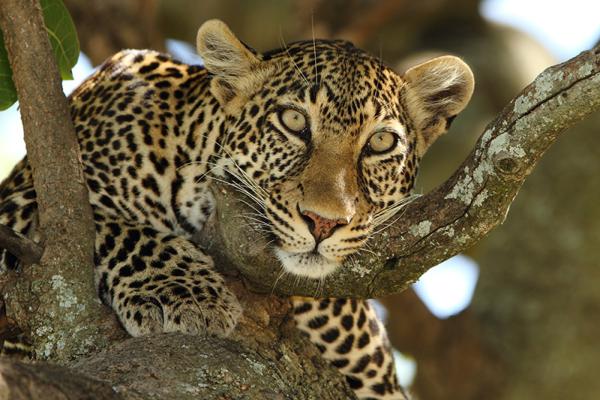

Big Five | Elephant | Lion | Rhinoceros | Buffalo
The Leopard, part of the Big Five animal kingdom, is more commonly found along riverine forests and bushes. Although less common, they also can be found along open plains and savanna, mainly in hills and rocky outcrops.
Habits:
Leopards normally hunt at night and dusk, staying in secluded spots during the day or lying in high branches of trees. They are solitary animals by nature, only associating with a female for mating and staying with her only for a couple of days.
Leopards are masters of camouflage and they move silently trough the vegetation to attack their prey at very close quarters. The victim is normally killed with a bite on the back of the neck, and then taken up a tree, where the leopard will feed at leisure, away from scavengers.
Leopards are extremely territorial animals. Their life span is about 15 years, and they can attain a mass of about 70-kg.
Viewing Leopards in the Wild
Leopards are very elusive, but can be viewed in Parks such as:
* Kruger Park
* Hluhluwe-Imfolozi Game Reserve
* Ithala Game Reserve
Private reserves and lodges such as:
* Pilanesberg Game Reserve Lodges
* Madikwe Game Reserve Lodges
* Shamwari Game Reserve Lodges in the Eastern Cape
* Thornybush Game Reserve Game Lodges
* Sabi Sand Reserve Game Lodges
* Timbavati Game Reserve Game Lodges
* Kapama Game Reserve Game Lodges
Diet
Leopards are the most successful hunters of the cat family. Their prey includes Impala, Bushbuck, Warthog and also the young of Wildebeest, Kudu and Waterbuck. Rodents, ground birds, monkeys, baboons, frogs and fish, also make part of its diet.
Breeding
The female gives birth to one to three cubs after a gestation period of about 105 days. The cubs are kept in secluded spots, like thickets and rocky crevices. They are much darker than adults.
Female Leopards are very dedicated mothers leaving their cubs only when hunting.
The Big Five
Leopards are part of the renowned Big Five of the animal KIngdom which includes Elephant, Lion, Rhinoceros and Buffalo